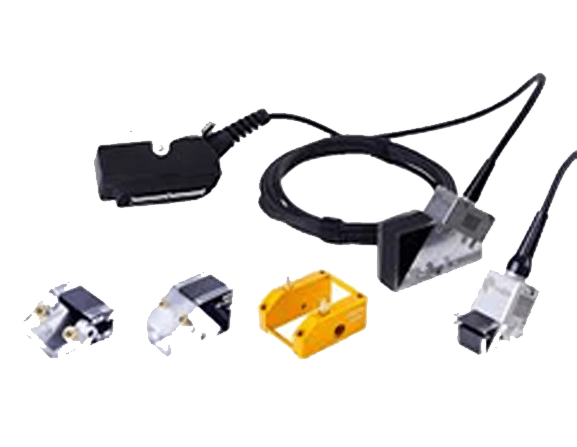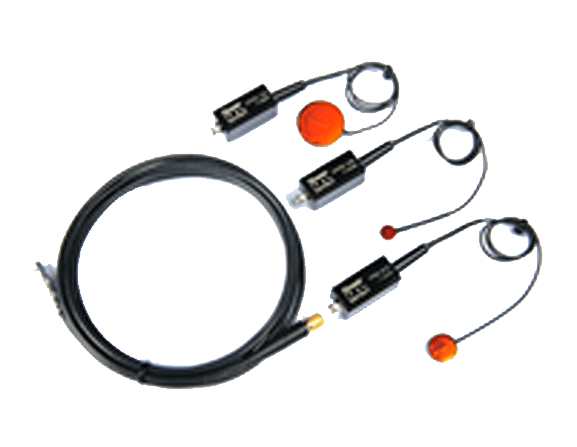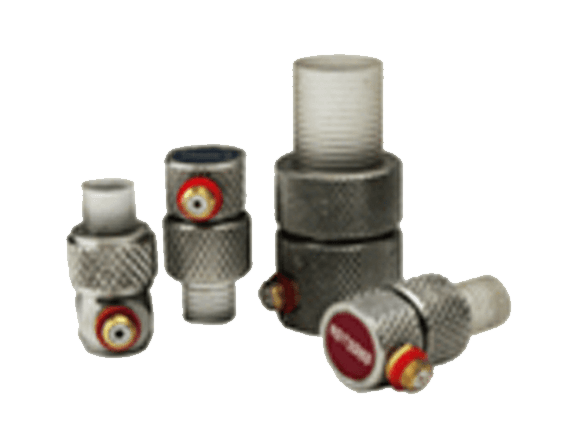
Phased Array (PAUT) Probes for corrosion mapping and weld inspection

Optimized-design for minimum footprint, carbide bids, drains and irrigation (IHC option), as well as optimized sliding geometry, is accounted for, for all wedges. These wedges are compatible with the probes described above. All wedges are marked with the M2M reference name (e.g., I0-G, I36-G2, etc.), the incidence angle in degrees and the nominal sound-path distance in millimetres. The nominal sound-path trajectory (line) is also engraved on both sides of the wedge
TOFD Probes & Wedges

Time-of-flight diffraction (TOFD) transducers and wedges generate refracted longitudinal waves in steel. These highly damped longitudinal wave probes provide a high resolution and performance suitable for ultrasonic testing on welds. Phoenix manufactures composite and non-composite TOFD transducers of varying frequencies from 2MHz to 15MHz and crystal diameters ranging from approximately 3mm (0.125″) to 20mm (0.787″). To accompany the Phoenix range is a wide selection of TOFD wedges manufactured from durable plastic, brass or stainless steel to suit varying inspection environments.
TULA, LIMBO TOFD & i-TOFD

The Integral TOFD probe solution provides unique benefits such as consistent sensitivity, the wedge and probe cannot be unscrewed during scanning and they are more robust as there isn’t any mechanical fixing of the wedge and transducer required.
The LIMBOTOFD is a unique low profile integral TOFD probe which is only 10 mm high allowing easy access to previously inaccessible areas which are currently untestable using conventional TOFD transducers
RTD Probes

RTD Probes are well known in the nuclear industry for inspection of critical weld areas in pipes and pressure vessels. The realm of applications for these transducers is extensive: inspection of coarse grain austenitic steel, location of under cladding cracks, detection and sizing of IGSCC (Intergranular Stress-Corrosion Cracking), automated scanning of pipe and pressure vessels, and continuous high temperature applications.
Flexible Probes

Flex transducers are ideal for inspecting radius areas of composites and accessing complex geometries in metals, such as weld cap areas or castings. These piezo-electric made transducers are thin, soft, compliant ultrasonic probes that can conform to curved surfaces using finger-tip pressure. The Flex series are available as single element (FFSC), composite single element (CFFSC), dual element and composite dual element. Standard Flex transducers are 5MHz or 10MHz at sizes of Ø6mm, Ø10mm or Ø20mm diameter.
Immersion Transducers

We offer immersion transducers that are specifically designed to operate in an immersion tank or with bubbler/squirter systems. They are usually manufactured with UHF waterproof connectors and can be designed with flat or focused lenses. All immersion transducers are offered in high resolution, general purpose and high sensitivity.
High temperature Probes

High temperature probes allow more rapid and cost effective testing by removing the need to cool surfaces in advance. The Phoenix high temperature range has a variety of transducers designed to perform reliably on surfaces at temperatures from 80˚C to 200˚ C
Special formulated high temperature couplants are required for use with these probes and care should be taken to use the correct couplant for the temperature of the component to be inspected. As a general guideline duty cycles of no more than 10 seconds with the hot surface followed by a minute of air cooling is advised.
Normal Incident Shear Wave

These transducers introduce shear waves directly into the test piece without the use of refraction. Generated shear wave propagate perpendicular to the test surface. Ratio of the longitudinal to shear wave component is very low. Direction of the shear wave polarization is normally in line with side connector, otherwise is marked.
High Frequency Transducers

We offer the highest quality of high frequency ultrasonic transducers both in contact or immersion, focused and unfocused style up to 200 MHz. Some of the most common applications using frequencies of 50 MHz and higher include the following
- Extremely thin material thickness measurements
- Near surface flaw detection
- Acoustic microscopy and material analysis
- Very thin non-metallic coatings
- High frequency material analysis applications
Delay Line Probes

We offer a complete line of high resolution; highly damped delay line probes both with fixed and removable delays. These delay line transducers are recommended for inspection of thin materials, near surface flaw detection and thickness gauging of thin materials. These transducers are also available with high temperature options.





